I’m spending a week in my friend’s house in my old hometown. I’m reconnecting with all the shops I used to visit. The fishmonger at the market, the love they put into cleaning my cuttlefish is just incredible. It is a lot of work, maybe even more so than cleaning squid. Yet it is very cheap, so that I’m extra grateful for the fact that every time I feel like bothering them with so much cleaning, and so little money, they reply to me: “Oh, no, we do it with pleasure.” “Happy to.” “That’s okay.”
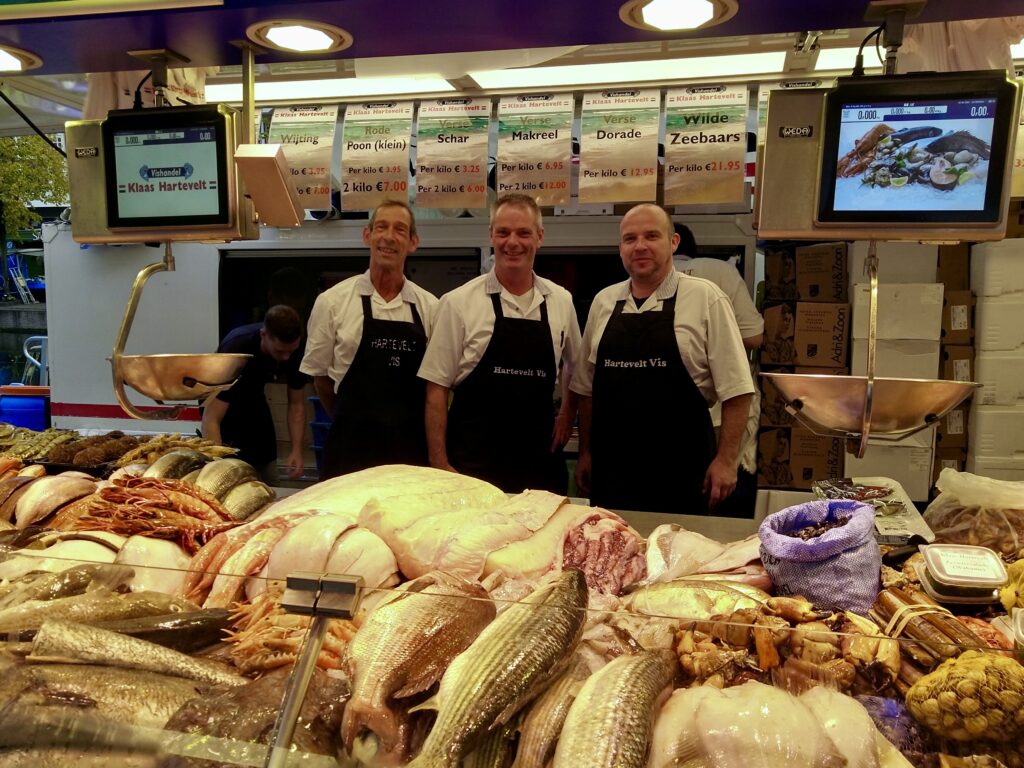
And it’s delicious, you know, cuttlefish. Deeper in flavour, meatier than squid. I learned from the Greeks how to prepare it. I once made a Greek onion stew that I saw on YouTube with soupiés as they call them, involving red wine too. Like a boeuf bourguignon with molluscs. Absolutely delicious.
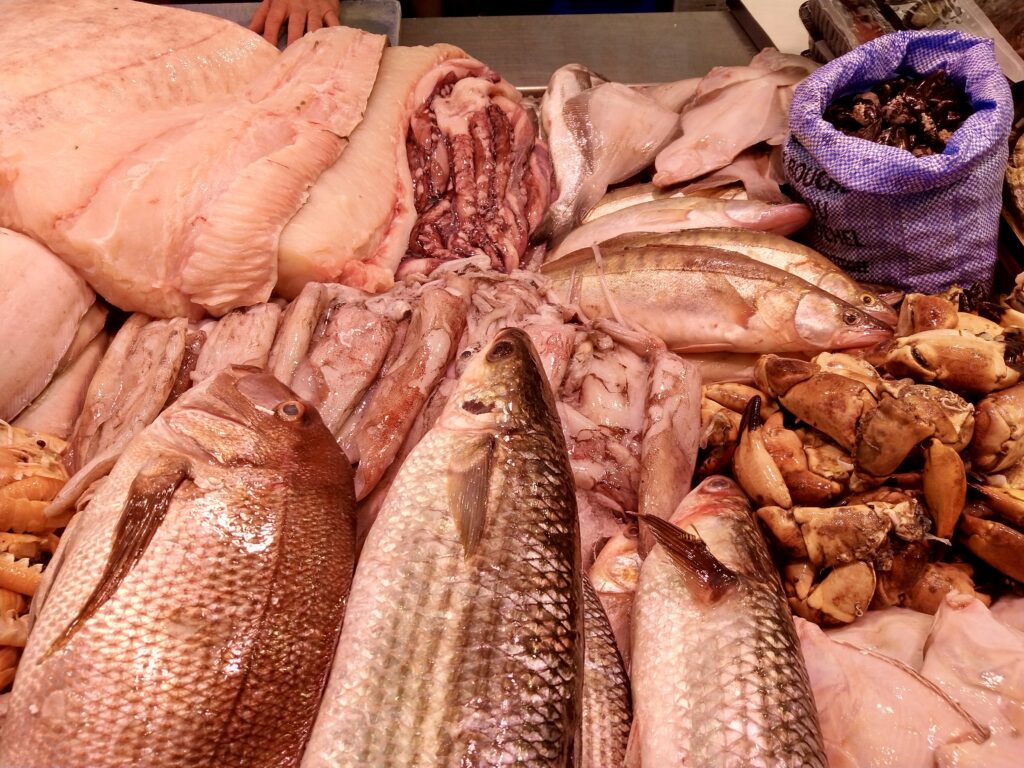
I visited the cheesemonger, somehow I have yet to find another place that has a French comté cheese as full of flavour as his. And again, he is happy to slice me a piece as big (or small in my case) as I like. Bless him.
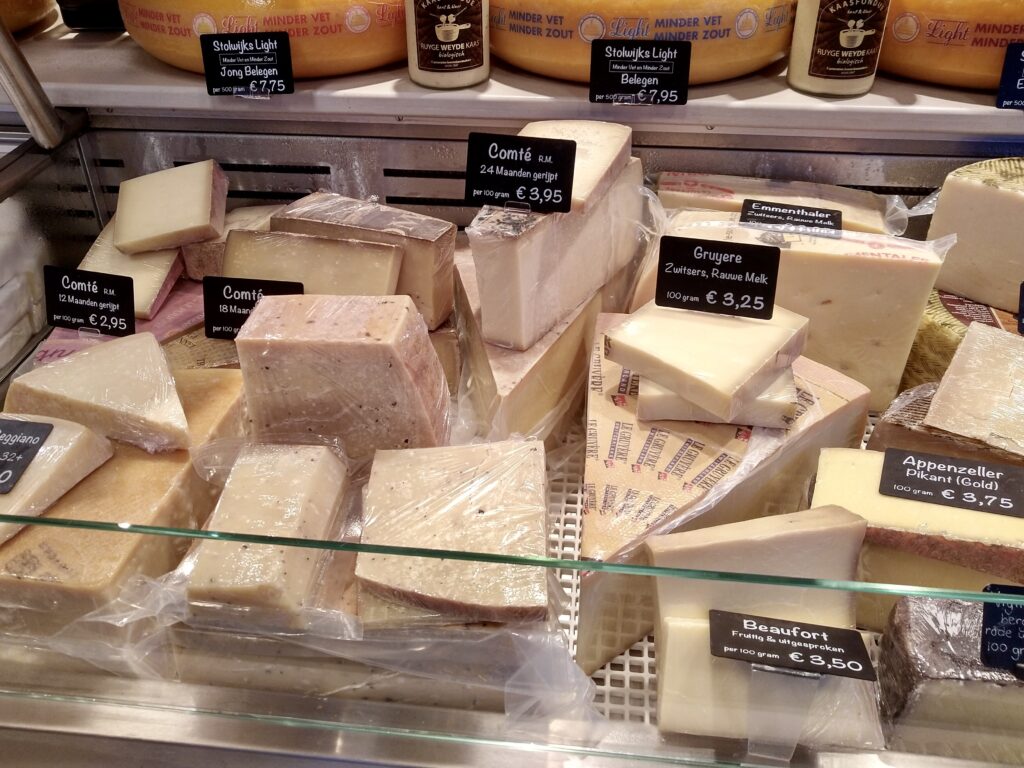
There is the dried fruits stall, where they always recreate my own preferred seed mix that I once bought in Germany, yet have not found anything like it here. I use it in salads or mix it in with overnight oats. My all-round seed mix really. Would be nice in bread too.
This time, I missed the Turks, my Turkish man on the bridge. “Hey, Sophie, how are you doing?” Sometimes I got a warm patting on my shoulder, or they offered me to have a coffee when I would come early in the morning before the hustle and bustle of the Saturday. Good pomegranates, affordable tiny cucumbers, and cheap weird-shaped paprikas. Sometimes I bought a bush of mint or parsley, then carefully wrapped it in a wet tea towel to keep in my fridge. By the end of the day though, their stall looks like a tornado has gone through, empty and the last pieces, pips and leaves around as feathers after a pillow fight.
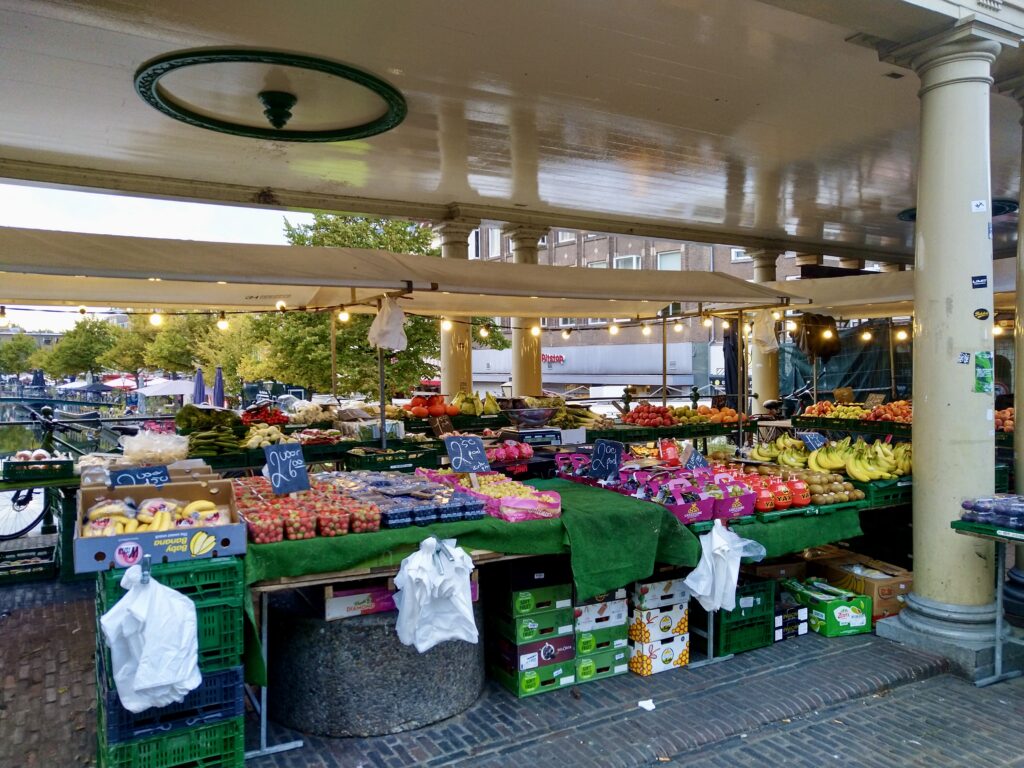
Good thing we have more Turks in Leiden, many more. There is the small shop where I buy the delicious plums and apricots, carefully selected, yet a little more expensive, a luxury. And their lentil and bulghur köfte used to be my favourite pre-cinema food. The old man (it is now his son’s) always welcomes me with a big smile. “How are you doing?” I ask. “I’m aliiiive,” he says, giggling. “Beautiful ladies always welcome.” When he knew I was looking for a house, every time he would ask: “Have you found anything?” “Are you okay?” “I’m so sorry, I have considered whether I would have some space, but I can’t, we have a flat, it’s only for older people.” What a treasure. I learned about Rumi, the poet, from him and their cook, the one who made the köfte.
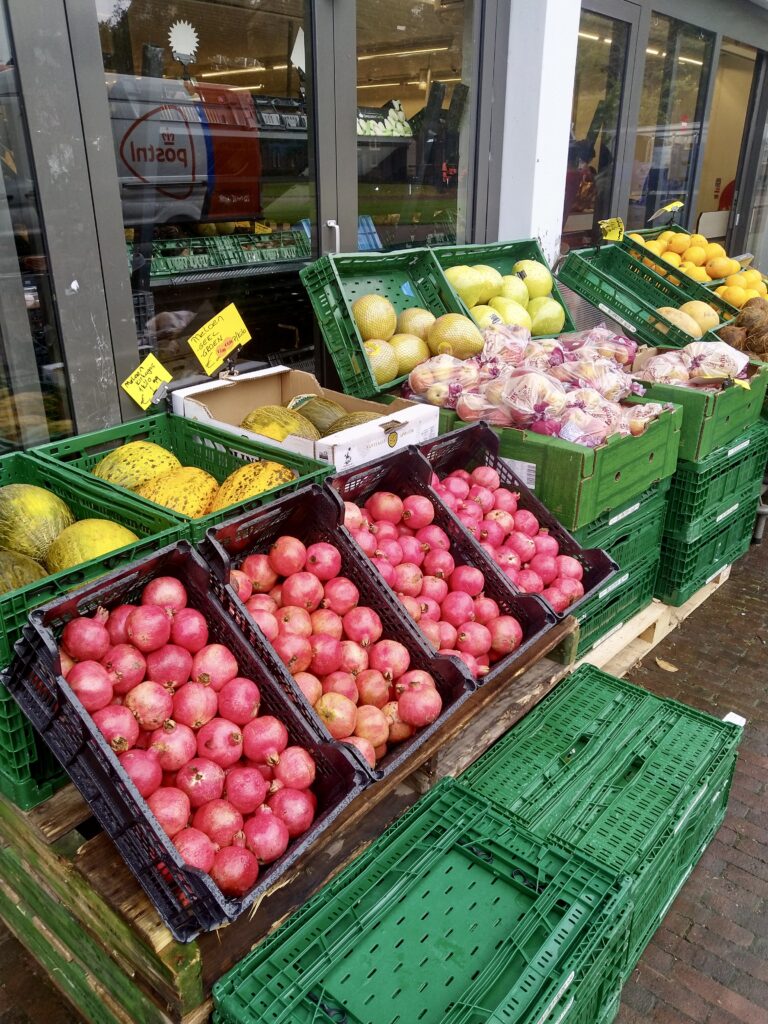
But Turkish food walhalla takes place in the Turkish supermarket just five hundred meters on. You can come there in the morning and there is nobody there. You can come there in the evening and it feels like a dinner party going on. People carefully selecting their fruit and vegetables, buying big portions for big families. And this time of year, it feels like Christmas, harvest time. The fruit and vegetable section is stacked with piles of boxes, with the first pomegranates, the first mandarins, a box of fresh olives above little light green courgettes. Next to small bulbed aubergines in different colours are some small boxes of fresh pistachios. On the other side, fresh figs, the good ones, the small ones, juicy and sweet, purple and green varieties.
There is okra, a favourite of my grandmother’s, when she was young. I have no idea how she came up with such an exotic favourite, growing up in 1920s Maastricht. Behind the okra is kouseband, yardlong bean in English as they are indeed a yard long. It is a vegetable I know from Surinam cuisine, a former Dutch colony. I remember the cleaning lady, when I was a child, cooking it with potatoes in a curry to fill roti. Delicious!
Then on to rice and grains. An isle with endless types and brands of rice, and not just rice: pulses, bulghur, couscous, barley. I love barley, they do not just sell the groats, also barley semolina, in three grades of coarseness, multiple brands. Sold as tchicha, used by Moroccans to make a lovely pan-baked dense flat bread that I often eat at my aunt’s who has a Moroccan baker just around the corner. Barley is more nutty than wheat I find, and less bouncy.
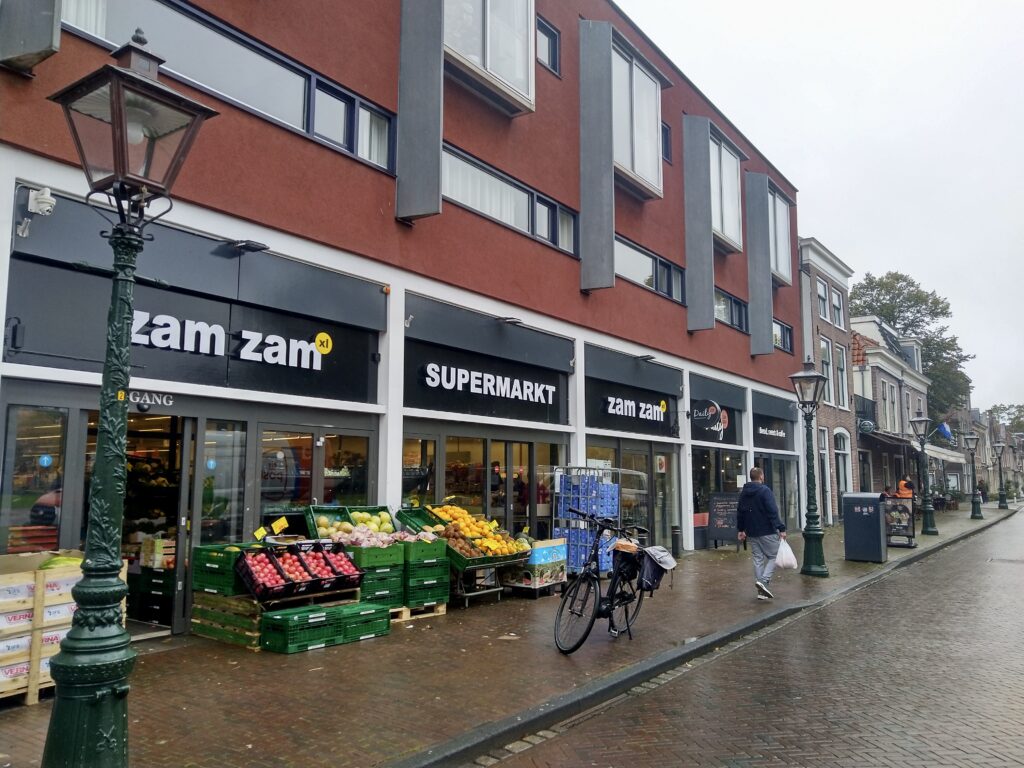
They also sell freekeh, something I have never yet cooked myself but would love to, as I had it in London at a delicious self-serve restaurant chain, served as a base for all the Middle Eastern goodness on top, roast cauliflower, chickpeas, aubergine in tahini dressing. Freekeh are green durum wheat grains (early harvested) that are roasted and cracked or polished. I can only imagine how dense in flavour and nutrients this must be. Next time.
I also passed by the Surinam rice this time, that I sometimes come to buy here for my mother, making the perfect rice for our rijstevlaai, a flat tart of a yeasted dough filled with rice pudding. My family insists on the Surinam rice as it binds the pudding while retaining the bite of the grain after cooking and baking (not too long and not too much stirring!). Maybe a pilav rice would do too, but the Surinam rice also gives it this earthy je-ne-sais-quoi that is typical of my family in general. But then, my other aunts and uncles might all use different types of rice as is usually the case with these traditions passed on orally and manually.
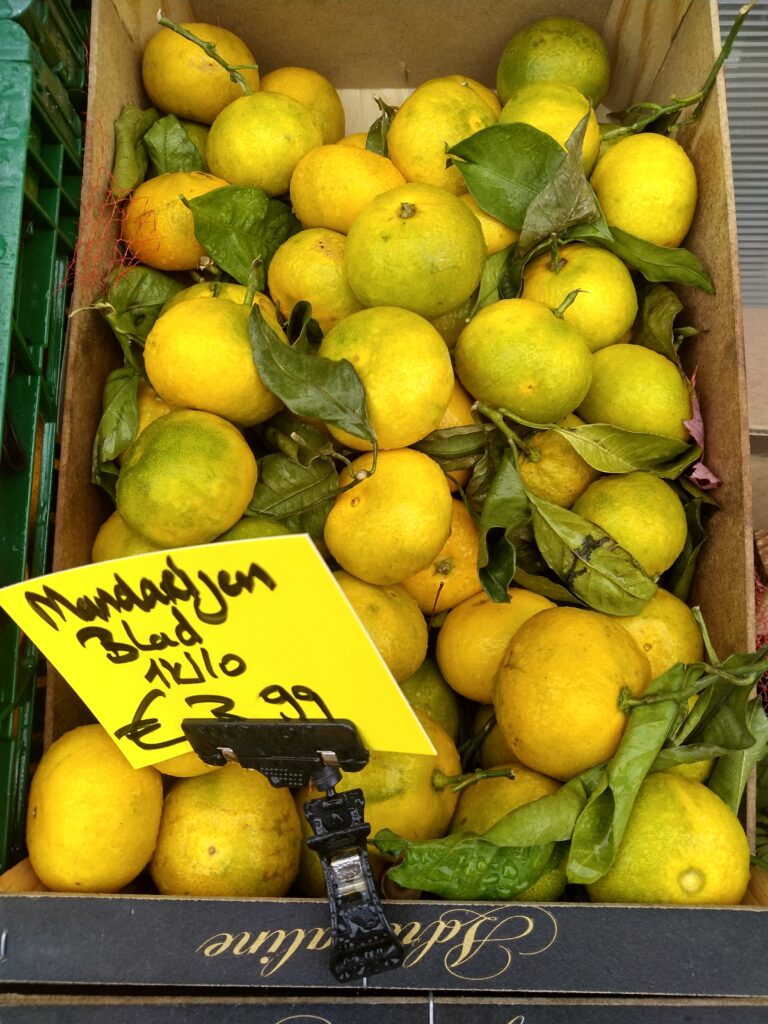
Before arriving at checkout, I made sure to resist the jars with ajvar, as here they even have the good brand a friend once brought me as a souvenir from North Macedonia. I find this roasted red pepper and aubergine puree to be very nice on a pancake (you can use flatbread of course) with cottage cheese (or whatever cheese, yoghurt, quark you have and like to put on it). But this time, I didn’t want to spend a lot of money.
And so I just left with some fruit: a Spanish pear (new harvest, green with a beautiful red gloss), and a couple of mandarins that I had picked specifically for the beauty of the leaves still on them.
The leaves got lost in the hard-handedness of the checkout. Thank God for the Turks, most of the times.
With many thanks to fishmonger Hartevelt, cheesemonger Winterswijk and my Turkish stall on the bridge at the Leiden market for allowing me to photograph their stalls, some making space for me to take a picture without them, others dressing up and giving me a big smile. Thanks too, to supermarket Zam zam who may not even have noticed I captured their shopfront. And of course, to the lovely people of the Turkish shop and deli Meltem who always welcome me so warmly and poetically. Thanks to you all.
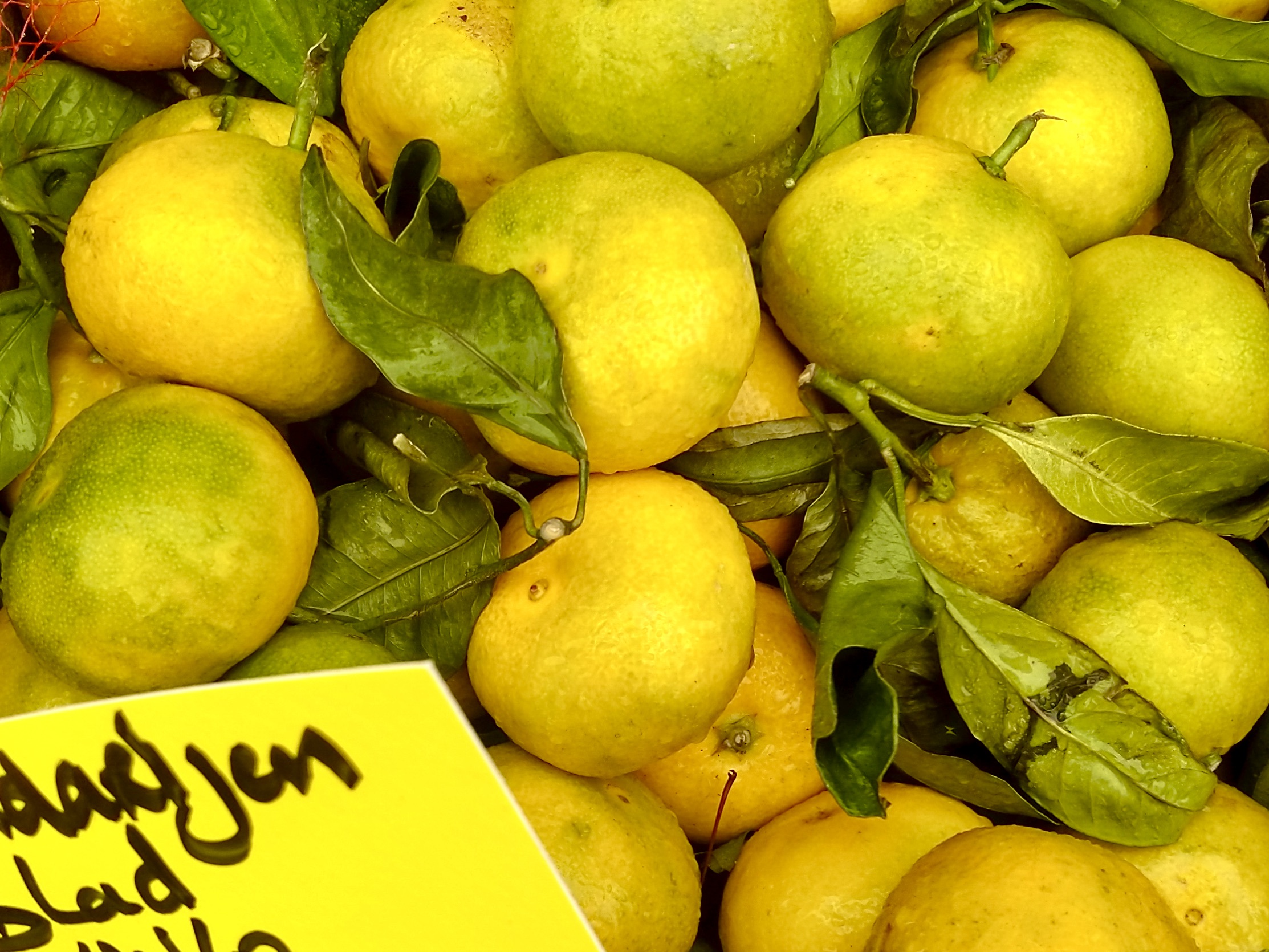
Leave a Reply